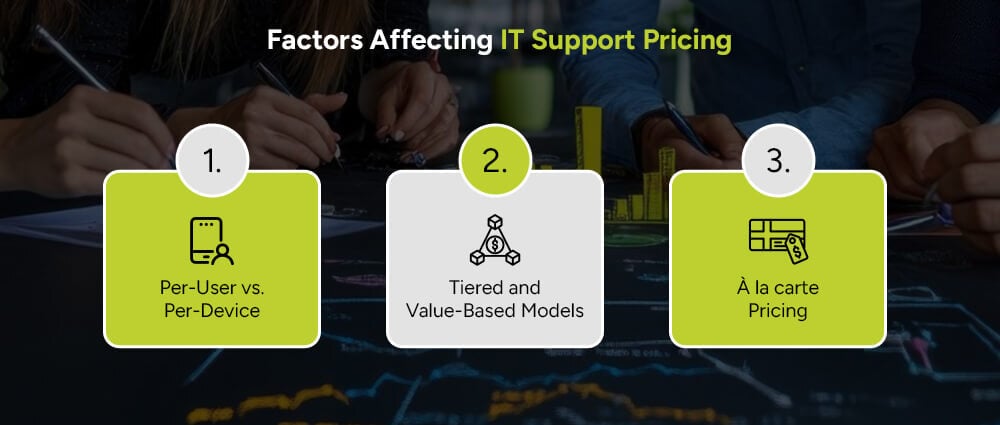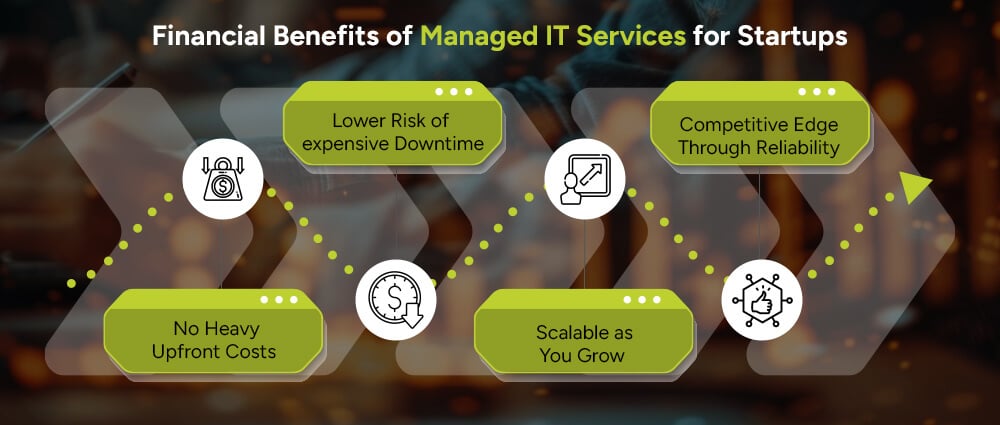Every startup’s lifeline today runs through tech. Reliable systems, fast networks, secure data, they don’t just support operations, they enable growth. That’s why understanding managed IT services pricing means recognizing how IT helps you scale, stay agile, and stand out in competitive markets like the UAE or GCC.
Startups in the region are booming. For instance, in the UAE, venture capital investment jumped by 93% in 2021, hitting around USD 1.17 billion. To maximize that capital, it makes sense to channel resources toward smart, flexible IT, which brings us to managed IT services.
Managed IT services are when you outsource your IT operations, like help desk, network monitoring, updates, backups, and cybersecurity solutions, to a specialist provider aka an MSP. This gives you enterprise-level support without the overhead of in-house infrastructure.
But what lies behind the IT managed services pricing? Key factors include:
Regional competition and standards, in hubs like Dubai and Riyadh, providers must stay competitive, yet sustainable.
What are the factors that come into play when deciding upon the right IT support pricing? Let’s break it down:

Per-user pricing charges a flat monthly rate per person covering all their devices; per-device pricing charges per workstation, server, phone, etc.
Some MSPs bundle multiple services into “basic,” “premium,” or all-you-can-want packages, simplifying selection and control.
Just pick and pay for what you need, which is useful if you want flexibility
To summarize the key influencers on pricing, Support, and Remote managed IT services:
One helpful tool often promoted is the managed IT services pricing calculator. For example, in Dubai, providers like Cloud Technologies offer an MSP cost calculator where you input user counts, device mix, SLA levels, and support hours to estimate your IT expenses. These tools help startups model budgets before committing.
With the MEA IT services outsourcing market expected to rise from ~USD 49 billion in 2024 to over USD 90 billion by 2030, growing at around 10.6% CAGR, you’re diving into a huge, dynamic ecosystem. Having budget clarity helps you stay strategic and proactive.
When startups think of Managed IT Services, cost savings are usually the first thing that comes to mind. But the real value goes far beyond just saving money; it’s about creating a smoother, smarter way to run your business.
Your in-house team can stop putting out IT fires and instead focus on what drives growth, product development, like following software trends and FMCG growth, marketing, and innovation. This means less distraction and more energy spent on bringing your vision to life.
Managed IT providers bring in specialists who understand security, compliance, and industry best practices, like retail or Healthcare IT support in Dubai. You don’t need to hire multiple experts; you get their skills on demand, ensuring your tech operations are not just functional, but optimized.
Instead of unpredictable repair bills or surprise upgrades, you pay a fixed or clearly defined monthly fee. This predictability in IT costs helps you budget smarter and avoid sudden financial strain, a major plus for startups managing limited capital.
In fast-moving startup environments, every minute of downtime is a missed opportunity. Managed IT ensures proactive monitoring, quick problem resolution, and scalable solutions, so your business stays nimble and available when your customers need you most.
While operational efficiency is a huge win, the return on investment (ROI) is where managed IT services really shine.

You avoid big capital expenditures on servers, software licenses, or full-time IT hires. This frees up funds for areas that drive immediate growth, like marketing campaigns or product upgrades.
Downtime not only halts operations but can damage your reputation. Managed IT helps prevent technical failures before they happen, limiting unexpected troubleshooting costs and protecting your revenue flow.
Whether you need to onboard 5 new employees or launch in a new market, your IT services can scale up or down instantly, without the hassle of renegotiating contracts or buying new hardware.
Startups that run efficiently, stay secure, and respond fast to market changes gain a clear competitive advantage. Reliability builds trust with customers and investors, making you stand out in a crowded space.
Market Insight: Globally, the managed services market is projected to reach US$ 25.67 billion by 2025, with the UAE alone expected to contribute nearly US$ 79.8 million. This growth shows just how much trust businesses are placing in outsourced IT to fuel both stability and innovation.
To estimate ROI, startups can use a Managed IT Services ROI calculator. Compare:
Unfortunately, these calculators aren’t widely published, but many MSPs provide packaged tools or cost-benefit templates in proposals.
Ask your MSP these questions:
For startups, every dirham, or dollar, counts. Prioritizing IT budget optimization does more than save money:
In the UAE and MENA:
So, your ROI won’t just be financial; it reflects your alignment with digital transformation and emerging norms.
Whether you’re in the Fintech field, retail or medical practice, managed IT support cost for a startup can vary widely, and it’s not a one-size-fits-all number. Your final investment will depend on several factors, including:
The more users, devices, and systems you have, the more support you’ll need. A small team with a few laptops is simpler to manage than a growing company with multiple offices, mobile devices, and specialized hardware. A larger or more complex IT setup naturally requires more resources.
Managed IT can range from basic help desk support to full-service solutions that cover cybersecurity, cloud migration, management, backups, and compliance. The wider your service scope, the more expertise and ongoing management your provider will deliver.
MSPs use different pricing approaches, per user, per device, or flat-rate. Some offer tiered packages, others fully customizable plans. The right model should match your budget, flexibility needs, and growth plans so you’re paying for what you truly need.
Ultimately, the “right” cost is the one that matches your operational needs, security requirements, and growth plans, while still delivering measurable value and ROI.
Managed IT services pricing, IT managed services pricing, and managed services IT pricing are more than numbers; they reflect how efficiently and securely your startup runs. Using tools like the managed IT services pricing calculator, understanding factors affecting IT support pricing, and calculating ROI via a Managed IT Services ROI Calculator can help you harness the importance of IT in startup success.
With operational advantages beyond cost savings and financial benefits clearly outlined, the strategic move for startups is to prioritize IT budget optimization. This ensures your venture grows on solid, scalable ground. With IT help desk support specialists at Arpatech, your startup can get the support you require to get ahead of early competition, so let’s have that early meeting.
The cost of a Managed Service Provider (MSP) depends on things like how many people or devices you need to support, how complex your IT setup is, and what services you want. Many MSPs charge per user or per device, and prices can change based on whether you choose basic support or a full package that covers things like cybersecurity, cloud managed services, and backups. Where your business is located can also affect the price.